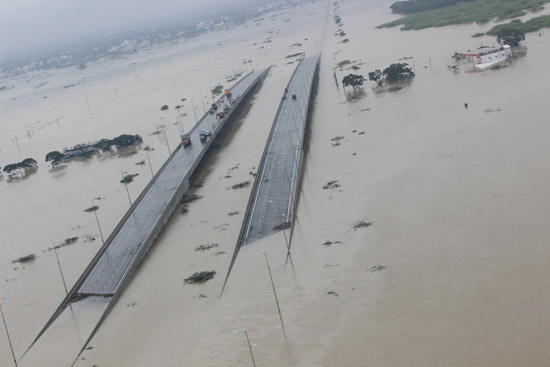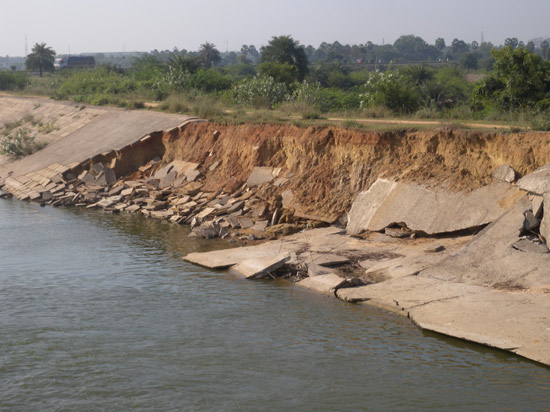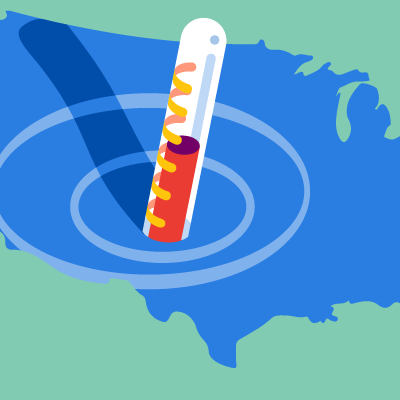Following December's major flooding in the state of Tamil Nadu in southern India, we traveled from AIR's office in Hyderabad to survey damage in and around Chennai, Kanchipuram, and Thiruvallur. In Chennai, we also met with the Director of the Regional Meteorological Centre, the Executive Engineer of the Central Water Commission, and the Executive Engineer of the Public Works Department to gain insight into the damage and collect real-time data from the event.
While the root cause of the flooding in Chennai―the capital of the state of Tamil Nadu―was exceptionally heavy rain over an extended period, this was not entirely a natural disaster. As a recent blog explained, that precipitation delivered colossal amounts of water to a rapidly growing metropolitan area with significantly compromised ability to withstand it caused by unchecked development and an infrastructure that has not kept up with the growth.
The northeast monsoon season―which generally lasts from October to December―is the principal rainy season for southern India, and typically brings Tamil Nadu about half of its annual precipitation. In 2015, however, the amount of rainfall experienced was exceptional. Chennai received 314 mm between November 8 and November 10, another 307 mm from November 16 to November 17, and a further 475 mm on December 2. The resultant flooding was one of the world's costliest disasters in 2015.
One of the main takeaways from our survey is that some of the damage could have been prevented.

Domino Effect of Inadequate Protections
Due to the unparalleled flow of water, the flood defenses (including retaining lakes) upstream of Chennai failed in a cascading effect. One of these structures―the Chembarambakkam dam―holds a rain-fed reservoir about 40 km from Chennai. As it filled beyond its capacity, the sluice gates were opened on November 15 and more significantly on December 1. This released huge volumes of water into the River Adyar, which flows from the dam to the south of the city center. The releases were evidently undertaken without any prior warning to the public downstream.
Unprecedented levels of water inundated the city of Chennai, the fourth most populated metropolitan area of India. During our survey, we saw no flood monitoring stations along the Cooum River, which flows through the center of Chennai to the sea, or along the Adyar. When we inspected the Adyar, we did not find adequate levels of flood protection. Development encroaching upon the banks of the river and inadequate maintenance of its channel had caused silt to accumulate, reducing its capacity in places.

After speaking with residents and officials, we also learned that high walls to prevent water from entering buildings near the rivers proved useless as defenses. This was because water entered their basements through storm drains and sewers directly connected to the nearby rivers.
Road and rail transport was severely impacted by the flooding; all the subway bridges in Chennai were rendered impassable, and bridges at Saidapet and Manapakkam on the Adyar River were overtopped on December 2. Operations at Chennai's International Airport were suspended for about a week because its runways and terminals were inundated. The airport is located next to the Adyar, and the newly constructed second runway actually crosses the river.
While Tamil Nadu did experience exceptionally heavy precipitation for an extended period, the flooding of Chennai could have been prevented―or at least mitigated―had the city been better prepared. Unbridled development has encroached upon bodies of water and marshland that previously absorbed flood waters. Flood defenses are inadequate; poor design and maintenance have compromised water courses, drainage, and flood control infrastructure; and the release of overfilled bodies of water could arguably have been better managed.
In our next blog, we'll report on some of the damage that the floods caused in and around Chennai.



